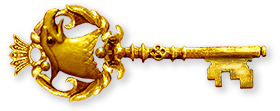
Experiment 1
Did Mr. Plover bury the crowbar?
 Experiment 1
Experiment 1
In this experiment we will discover whether or not the crowbar from the scene of the crime was buried by a snodlop (most likely Mr. Plover) or buried under sediment deposited from the the Stumporl Stream.
I] Hypothesis
Soil from shoveling dirt into a hole will look different than soil deposited in a hole from moving water, such as a stream.
II] Materials needed
• a large spoon or small shovel
• a bucket or pale to collect the dirt
• magnifying glass
• a permanent marker
• a funnel or rolled piece of paper (you will only need this of you are using the 2-liter soda bottles.)
-
Read through all the steps of the procedure before starting your experiment.
-
Collect enough soil to fill at least one 2-liter soda bottle. Make sure your soil sample is made up of different size particles. Best to collect your soil sample from three different areas; making sure each area consists of different size particles from the previous area.
-
Using a spoon, small shovel or stick mix your soil sample thoroughly.
-
If you are using 2-liter soda pop bottles cut one of the bottles in half and discard its top in a recycling bin. Mark the lower half “shovel” with a permanent marker. If you are using large glass jars mark one of the jars “shovel”. Mark your other container“stream”.

-
Using a spoon or small shovel fill the container you marked “shovel” with soil from the sample so it is about 10 centimeters (~4 inches) deep and set it aside.

-
Using a spoon or small shovel fill the container you marked “stream” with soil from the sample so it is about 4 inches deep. If you are using a 2-liter soda bottle you may need a funnel or rolled piece of paper to get the soil into the bottle without spilling.

-
Fill the rest of the container marked “stream” with water. Leave about 3 centimeters (just over an inch) of space at the top of the container so you won’t spill the water.

-
Cap the container marked “stream” securely and shake thoroughly until all the soil is caught up in the swirling water. This represents sediment suspended in the moving water of the stream.
-
Set the well shook container down next to the container marked “shovel” and let it rest overnight.
-
The next day, using your magnifying glass look carefully at the two soil samples. What do you observe?

The river bed of a fast-flowing stream usually is made up of heavier gravel and stones because all the lighter soils are carried away. River deltas have very fertile ground because the water slows as it branches out, depositing lighter, organic particles that are nutrient rich.
The damming of rivers for irrigation and other industry has the disadvantage of preventing the natural fertilization of the land from periodically flooding.

Snicktaw Creek
Note: That large rocks and pebbles along the shore were deposited in the spring, after a seasonal snow melt, when the water level was higher and moving more rapidly.

